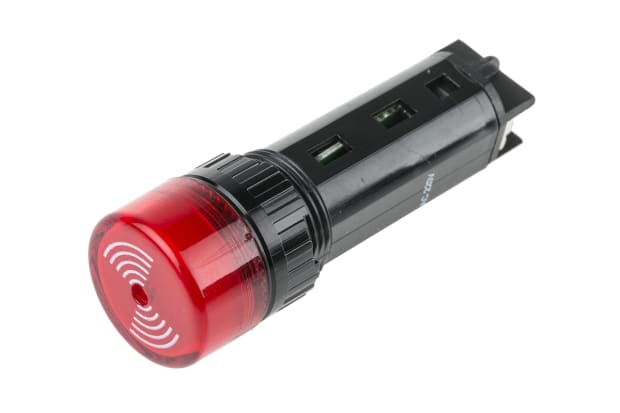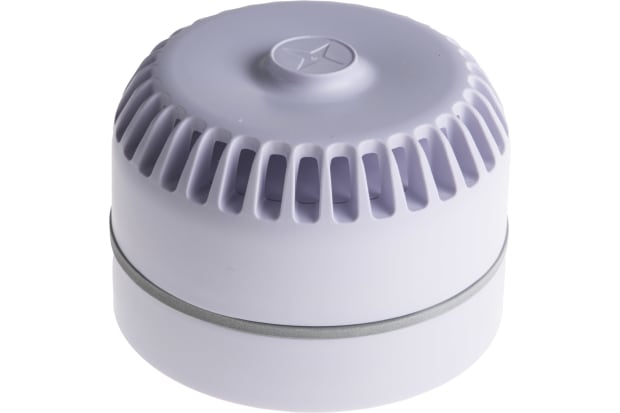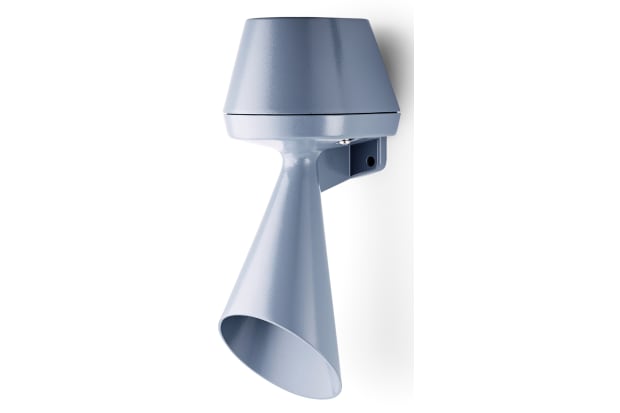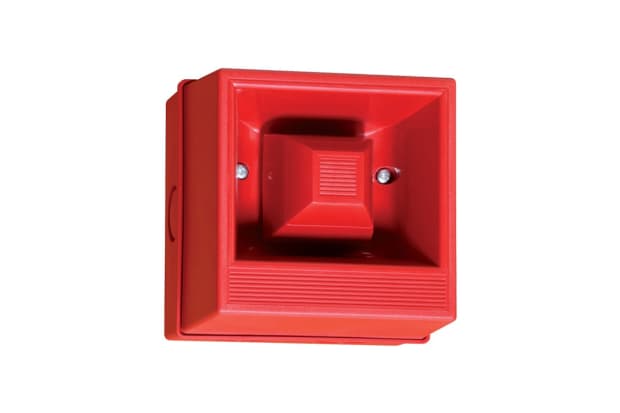- Published 9 Apr 2024
- Last Modified 9 Apr 2024
- 9 min
Understanding the Role of Electronic Sounders in Industrial Safety
Perfect for tradesmen, industry pros, and DIY enthusiasts prioritising safety in the workplace.

What are Electronic Sounders?
In the realm of industrial safety, electronic sounders play a pivotal role in alerting individuals to potential hazards and emergencies. These devices, also known as audible alarms or sirens, are designed to emit distinct sound patterns, ensuring quick and efficient communication of critical information in noisy environments. Let's delve into the fundamental aspects of electronic sounders, exploring their composition, functionality, and significance in ensuring a secure work environment.
Composition of Electronic Sounders:
Electronic sounders are comprised of several essential components working in unison to produce audible alerts. The core elements typically include a sound-producing mechanism, an electronic control circuit, and a power source. The sound-producing mechanism can vary, ranging from speakers to piezoelectric elements, each influencing the characteristics of the emitted sound.
Functionality: How do Electronic Sounders Work?
Electronic sounders operate on the principle of converting electrical energy into sound waves. When triggered, the control circuit activates the sound-producing element, resulting in the emission of a loud and attention-grabbing signal. The ability to produce distinct tones and patterns is crucial for conveying different messages, allowing for differentiation between routine notifications and urgent alarms.
Significance in Industrial Settings:
In industrial settings, where ambient noise levels can be high, electronic sounders serve as indispensable tools for communication. Their role extends beyond mere alerting; they contribute to the overall safety ecosystem by providing real-time notifications for events such as fire alarms, equipment malfunctions, or evacuation signals. The audibility and immediacy of these signals enhance response times, mitigating potential risks and ensuring the well-being of personnel.
Versatility in Signalling:
One notable feature of electronic sounders is their versatility in signalling. Integrated systems often include additional visual components such as LED beacon lights or flashing beacons, reinforcing auditory signals with visual cues. This combination is especially effective in environments where individuals may have varying degrees of hearing ability or in situations where ambient noise levels might compromise the effectiveness of audible alerts alone.
How do Electronic Sounders Work?
Now that we've gained insight into what electronic sounders are, let's unravel the inner workings of these crucial safety devices. Understanding how electronic sounders function is vital for anyone involved in industrial settings, where the swift dissemination of information is paramount.
1. Activation Mechanism:
At the heart of electronic sounders lies an intricate activation mechanism. When triggered by a control signal, typically initiated by a central alarm system or manually through a control panel, electronic sounders spring into action. The activation process sets in motion the conversion of electrical energy into audible sound, alerting individuals to potential hazards.
2. Sound Production:
Electronic sounders employ various sound-producing elements to generate distinctive signals. One common element is the speaker, capable of reproducing a wide range of tones. Another frequently used component is the piezoelectric buzzer, known for its efficiency and durability. The choice of the sound-producing mechanism influences the volume, frequency, and pattern of the emitted sound.
3. Tone and Pattern Variation:
The ability to produce different tones and patterns is a key feature of electronic sounders. This variation serves a crucial role in communication, allowing for the differentiation between types of alerts. For instance, a continuous, steady tone might signal a routine announcement, while an intermittent or pulsating pattern could indicate an emergency.
4. Integration with Visual Signals:
In many industrial scenarios, relying solely on audible alerts may not suffice. To enhance the effectiveness of communication, electronic sounders often integrate with visual signals, such as LED beacon lights or flashing beacons. This combination ensures that alerts are not only heard but also seen, catering to diverse working environments and potential hearing impairments.
5. Control and Monitoring:
Electronic sounders are often part of a larger safety network controlled by advanced systems. These systems enable the monitoring of the sounders' status, ensuring they are operational and ready to respond when needed. Regular testing and maintenance are essential components of this control process, guaranteeing the reliability of the entire safety system.
Different Types of Electronic Sounders
In the realm of industrial safety, the diversity of potential hazards necessitates a range of electronic sounders tailored to specific applications. Understanding the different types available empowers professionals to select the most suitable device for their unique safety requirements. Let's explore some common variations of electronic sounders:
1. Continuous Tone Electronic Sounders:
These sounders emit a continuous, unbroken tone and are often used for routine notifications or signalling non-urgent situations. The simplicity of the continuous tone makes it easily distinguishable from other patterns, providing a clear and recognizable signal in less critical scenarios.
2. Pulsed Tone Electronic Sounders:
Pulsed tone sounders produce intermittent signals characterized by short bursts of sound followed by periods of silence. This type of electronic sounder is typically employed for general alarms, alerting individuals to potential hazards that require attention but may not be immediate emergencies.
3. Warble Tone Electronic Sounders:
Warble tone sounders generate a fluctuating, warbling sound pattern. This type of sound is highly effective in capturing attention, making it suitable for environments with high ambient noise levels. Warble tone sounders are often used in industrial settings where clear communication is crucial.
4. Dual-Tone Electronic Sounders:
Dual-tone sounders, as the name suggests, produce two distinct tones alternatively or simultaneously. This feature enables the differentiation between various types of alarms or notifications. For example, a fire alarm system might use dual-tone sounders to convey different messages for fire alerts and evacuation signals.
5. Multitone Electronic Sounders:
Multitone sounders are versatile devices that can emit a variety of tones and patterns. This flexibility makes them suitable for complex environments where different alerts require unique signals. These sounders are programmable, allowing for customization based on the specific needs of the industrial setting.
Common Applications for Electronic Sounders

Electronic sounders find widespread use across various industrial and commercial settings, serving as indispensable components in safety and communication systems. Here are some common applications where electronic sounders play a crucial role:
1. Fire Alarm Systems:
One of the primary applications of electronic sounders is in fire alarm systems. In the event of a fire or smoke detection, electronic sounders emit distinctive alarms, alerting occupants to evacuate the premises promptly. The audibility of these alarms is essential for ensuring a swift and organized response to potential life-threatening situations.
2. Emergency Evacuation Signals:
Electronic sounders are employed to signal emergency evacuation in industrial facilities and commercial buildings. The distinct tones or patterns generated by these sounders convey the urgency of the situation, guiding individuals to safety points and facilitating a coordinated evacuation process.
3. Machinery Malfunction Alerts:
In manufacturing environments, electronic sounders are integrated into control systems to alert personnel to machinery malfunctions or failures. Rapid notification of such issues is crucial for preventing accidents, minimizing downtime, and allowing prompt maintenance interventions.
4. Hazardous Material Release Alerts:
Facilities dealing with hazardous materials utilize electronic sounders to warn personnel in the event of a material release. The immediate notification provided by sounders allows workers to take appropriate safety measures, including donning protective equipment or evacuating the area.
5. Security Breach Alarms:
In commercial and industrial complexes, electronic sounders are often part of security systems. These sounders can emit alarms in response to unauthorized access, security breaches, or other safety-related incidents, contributing to overall site security.
Key Considerations for Choosing an Electronic Sounder
Selecting the right electronic sounder is crucial for optimizing safety and communication systems within industrial and commercial settings. To make an informed choice, consider the following key factors:
1. Audibility and Sound Characteristics:
The primary function of an electronic sounder is to alert individuals to potential hazards or emergencies. Assess the audibility of the sounder in the specific environment where it will be deployed. Consider the sound characteristics, including volume, tone, and pattern, ensuring they align with the intended purpose of the alarm.
2. Environmental Conditions:
Evaluate the environmental conditions of the intended installation site. If the environment is characterized by dust, moisture, or extreme temperatures, choose an electronic sounder with appropriate ingress protection (IP) ratings. Explosion-proof sounders may be necessary in hazardous locations where flammable substances are present.
3. Integration with Visual Alerts:
For enhanced effectiveness, opt for electronic sounders that can integrate seamlessly with visual components like LED beacon lights or flashing beacons. This combination ensures that alerts are not only heard but also seen, a crucial consideration in noisy environments or situations where individuals may have varying degrees of hearing ability.
4. Power Source and Reliability:
Consider the power source of the electronic sounder. Depending on the specific application and site conditions, choose between devices powered by direct electrical sources or those utilizing batteries. Ensure reliability by selecting sounders with backup power options in case of primary power failures.
5. Compliance with Regulations:
Check local, regional, and industry-specific regulations governing the use of audible alarms. Ensure that the selected electronic sounder complies with relevant standards and certifications to avoid legal issues and guarantee the device's reliability in critical situations.
Electronic Sounders FAQ
Popular Brands
Browse related products from Eaton
Browse related products from AUER Signal
Browse related products from Clifford & Snell


